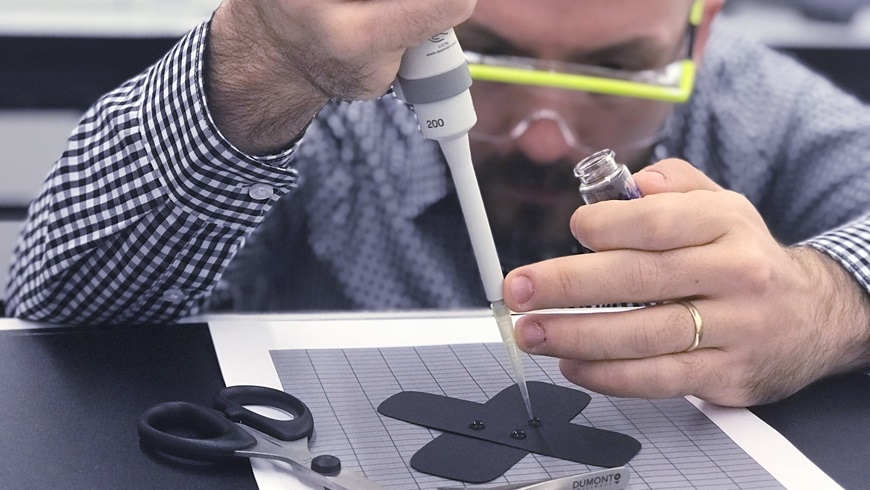Oct 12 2018
Scientists at Empa are designing polymer fibers that can be fitted with drugs. The smart fibers can identify the need for drug infusion and calculate an accurate dose without clinical supervision.
 Credit: Empa
Credit: Empa
The work is part of the “Self Care Materials” project and involves making fibers from biodegradable polymers using a range of processes.
“The targeted use of the fiber determines which manufacturing process is best,” explains Empa researcher and project coordinator René Rossi.
Ultimately, all processes create novel fibers, the nano-architecture of which is composed of numerous layers and components. On this project, delicate, light membranes with a large surface are developed by electrospinning.
“The properties of these new materials are currently being investigated with test substances,” says Rossi. In the end product, for instance, painkillers or antibiotics are to be incorporated into the fibers.
With the intention of guaranteeing that the dosage of the active substances is exactly as needed, the scientists have developed a tricky control mechanism: Some polymers are degradable by the body under specific conditions.
This feature can be used specifically. Rossi: “In response to a stimulus from the body, the fibers should release their drugs into the environment at a calculated degradation rate.”
Such an irritation can be the changed pH value of a skin wound, which specifies that the tissue damage must be treated. As a self-care material, the fibers in the form of a garment or plaster thus support the diagnosis and treatment of illnesses.
“The use of self-care fibers is conceivable for an enormous number of applications,” says Rossi. Along with chemical signals from the body, however, stimuli can also be used that are purposely set from the outside to regulate the discharge of medication by the fibers.
Textiles or dressings that discharge a remedy under mild pressure or a light stimulus can add to the quality of life of patients and simultaneously relieve the load on healthcare staff.
Also, the system can be used for preventive procedures. The notion behind it: Where active substances can be discharged, substances are also able to enter the fiber in the opposite direction.
“Thus, the fibers can act as sensors and, for instance, measure the sugar level in the blood,” explains Rossi. With premature babies, the sugar balance is predominantly likely to be out of balance. Using such sensors, blood sugar can be tracked painlessly via the tender skin without the babies having to undergo a prickly blood sample.
For the CCMX project, the team of Empa and EPFL researchers is conducting collaborative research into the further development of smart medical fibers until 2020.
Twenty companies have thus far been gained as industrial partners, including Syngenta and—as the newest addition—Nanosurf from Liestal.
The industry association Swiss Textiles and the research initiative of the Swiss textile manufacturers Subitex are also participating in the project